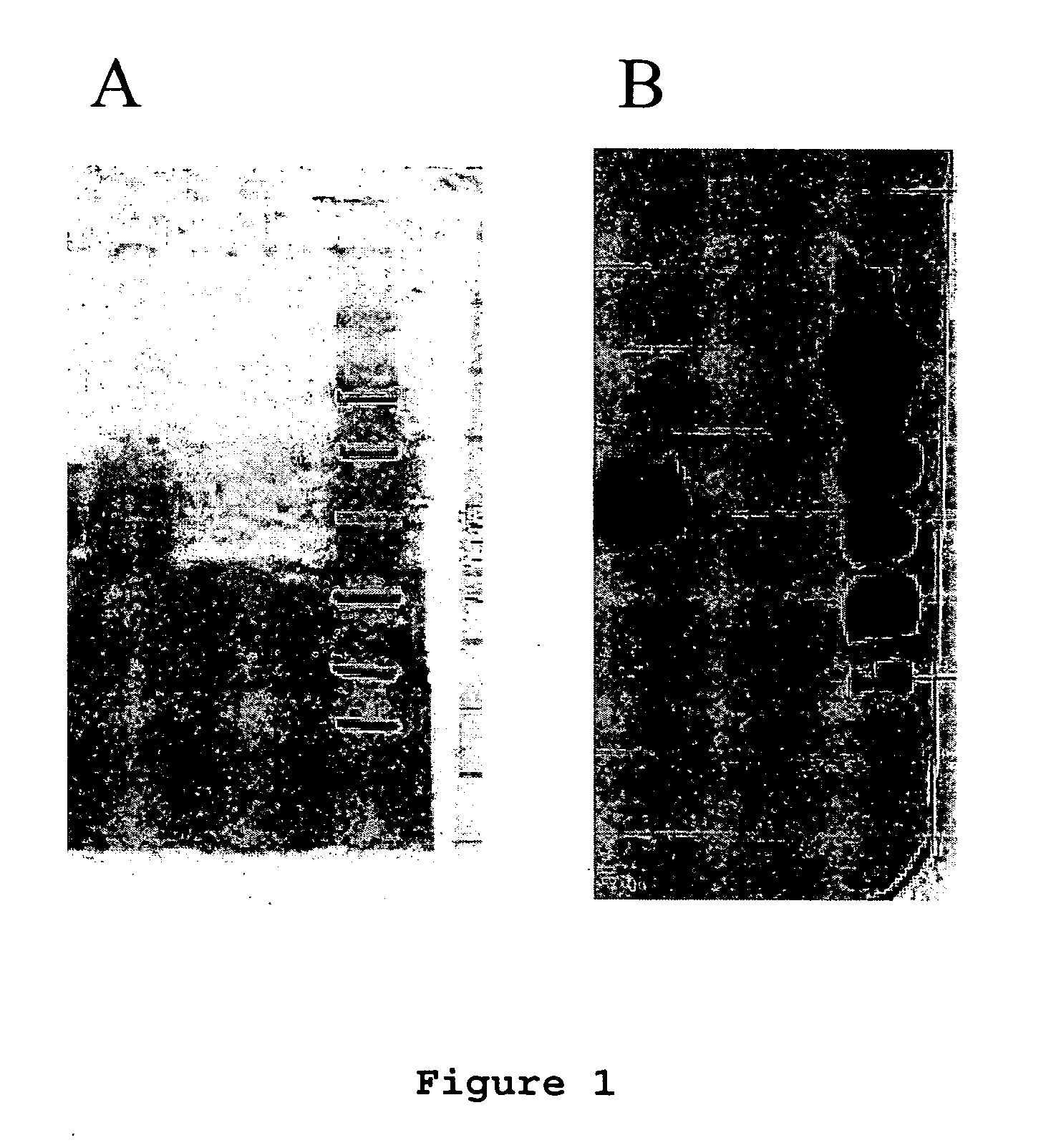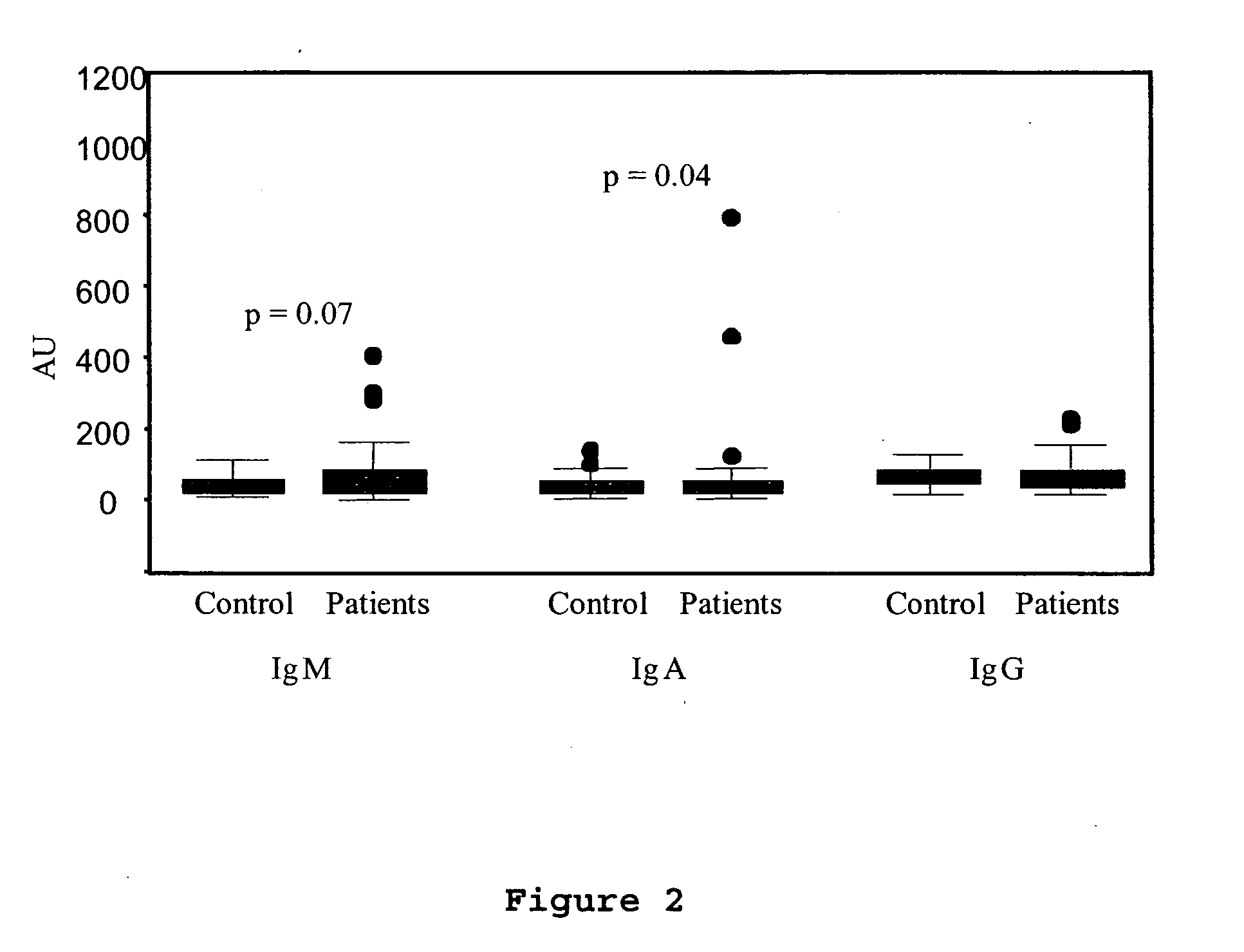Method for assessing risk of and predisposition to development of a pathology related to the presence of anti-epcr autoantibodies
a technology of autoantibodies and pathologies, applied in the field of pathology risk assessment and predisposition to development of pathology related to can solve the problems of obstructing blood flow entirely, little is known about the mechanisms relating the presence of antiphospholipids, and reducing the blood supply to the territories irrigated by the damaged blood vessel, so as to prevent the activation of pc
- Summary
- Abstract
- Description
- Claims
- Application Information
AI Technical Summary
Benefits of technology
Problems solved by technology
Method used
Image
Examples
example 1
Use of Anti-EPCR Autoantibodies as Markers for the Risk and Susceptibility of a Subject to Develop Pathologies Related to the Presence of High Levels of Said Autoantibodies
I. Materials and Methods
Patients
1. Patients with APLS and Controls
[0056] The study comprised a total of 43 patients [age 44±11 years (mean±standard deviation (SD)), 39 women and 4 males] diagnosed with antiphospholipid syndrome (APLS) according to international diagnostic criteria [Wilson W A, Gharavi A E, Koike T, Lockshin M D, Branch D W, Piette J C, Brey R, Derksen R, Harris E N, Hughes G R, Triplett D A, Khamashta M A. International consensus statement on preliminary classification criteria for definite antiphospholipid syndrome: report of an international workshop. Arthritis Rheum. 1999; 42:1309-11; Brandt J T, Barna L K, Triplett D A. Laboratory identification of lupus anticoagulants: results of the Second International Workshop for Identification of Lupus Anticoagulants. On behalf of the Subcommittee...
example 2
Detection of Anti-EPCR Autoantibodies in Women with Myocardial Infarction
[0099] Study group: 142 women (aged 39±5 years, mean±standard deviation) with myocardial infarction, and 142 healthy women (aged 39±5 years), matched by age and geographical origin. A study was made of the classical myocardial infarction risk factors (hypertension, hypercholesterolemia, diabetes, smoking and oral contraceptives). Assays were made of anti-EPCR autoantibodies IgG, IgM and IgA in samples of plasma, following the ELISA test protocol described under “Materials and Methods” (Example 1). [0100] Results: High levels of anti-EPCR autoantibodies, defined by values in excess of percentile 93 of the distribution of the levels of anti-EPCR antibodies in the control group, were associated to an increased risk of myocardial infarction. In the multivariate analysis, high levels of anti-EPCR antibodies were associated to an adjusted odds ratio (OR) of 3.5, with a 95% confidence interval (95% CI) of 1.4-8.9 for...
PUM
| Property | Measurement | Unit |
|---|---|---|
| pH | aaaaa | aaaaa |
| temperature | aaaaa | aaaaa |
| pH | aaaaa | aaaaa |
Abstract
Description
Claims
Application Information
 Login to View More
Login to View More - Generate Ideas
- Intellectual Property
- Life Sciences
- Materials
- Tech Scout
- Unparalleled Data Quality
- Higher Quality Content
- 60% Fewer Hallucinations
Browse by: Latest US Patents, China's latest patents, Technical Efficacy Thesaurus, Application Domain, Technology Topic, Popular Technical Reports.
© 2025 PatSnap. All rights reserved.Legal|Privacy policy|Modern Slavery Act Transparency Statement|Sitemap|About US| Contact US: help@patsnap.com



